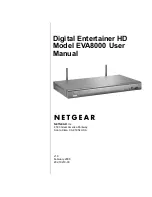
34
CHAPTER 5.
USAGE
5.3.6 Telnet Console
This option offers a Java applet for the Telnet protocol (
) to open a connection to RAS-
PutIn. Its main use is the passthrough option for the serial port 1 (see also
). The Telnet
access has to be enabled in the security settings as well (see
). Of course it is also possible
to connect with a standard Telnet client. For details regarding the Telnet interface please refer
to
Figure 5.10: Telnet Console
5.4 Server
5.4.1 Power Control
The appearance of the power control options depends on the power control option connected
to RAS-PutIn and on the currently activated setting (see Section
on page
for an
explanation). There are three options available:
power control disabled
internal power option
external power option
Internal power option
For connecting the internal power option please refer to Section
on page
. Once connected
it has to be enabled using the serial settings (see Section
on page
).
The Power Control panel enables access to the most important external buttons of your host
system besides of the keyboard. These buttons are the reset and the ATX power button.
Figure 5.11: Internal Power Control
The power button is the representation of the ATX power button on your host system. It is used
to switch on and off the power supply. The ATX power button knows two operation modes:
pressing it shortly and pressing it for about 4 seconds. As shown in Figure
these two modes
are supported separately. Table
on the facing page explains the different effects.
Summary of Contents for RAS-PutIn
Page 1: ...RAS PutIn Installation and User Guide Based on Firmware 03 02 07 ...
Page 4: ...iv ...
Page 8: ...viii Contents ...
Page 12: ...xii List of Tables ...
Page 30: ...18 CHAPTER 4 CONFIGURATION ...
Page 76: ...64 CHAPTER 5 USAGE ...
Page 80: ...68 APPENDIX A GLOSSARY ...
Page 82: ...70 APPENDIX B RAS PUTIN VIDEO MODES ...
Page 88: ...76 APPENDIX D PIN ASSIGNMENTS ...
Page 92: ...80 APPENDIX F SPECIFICATIONS ...
















































